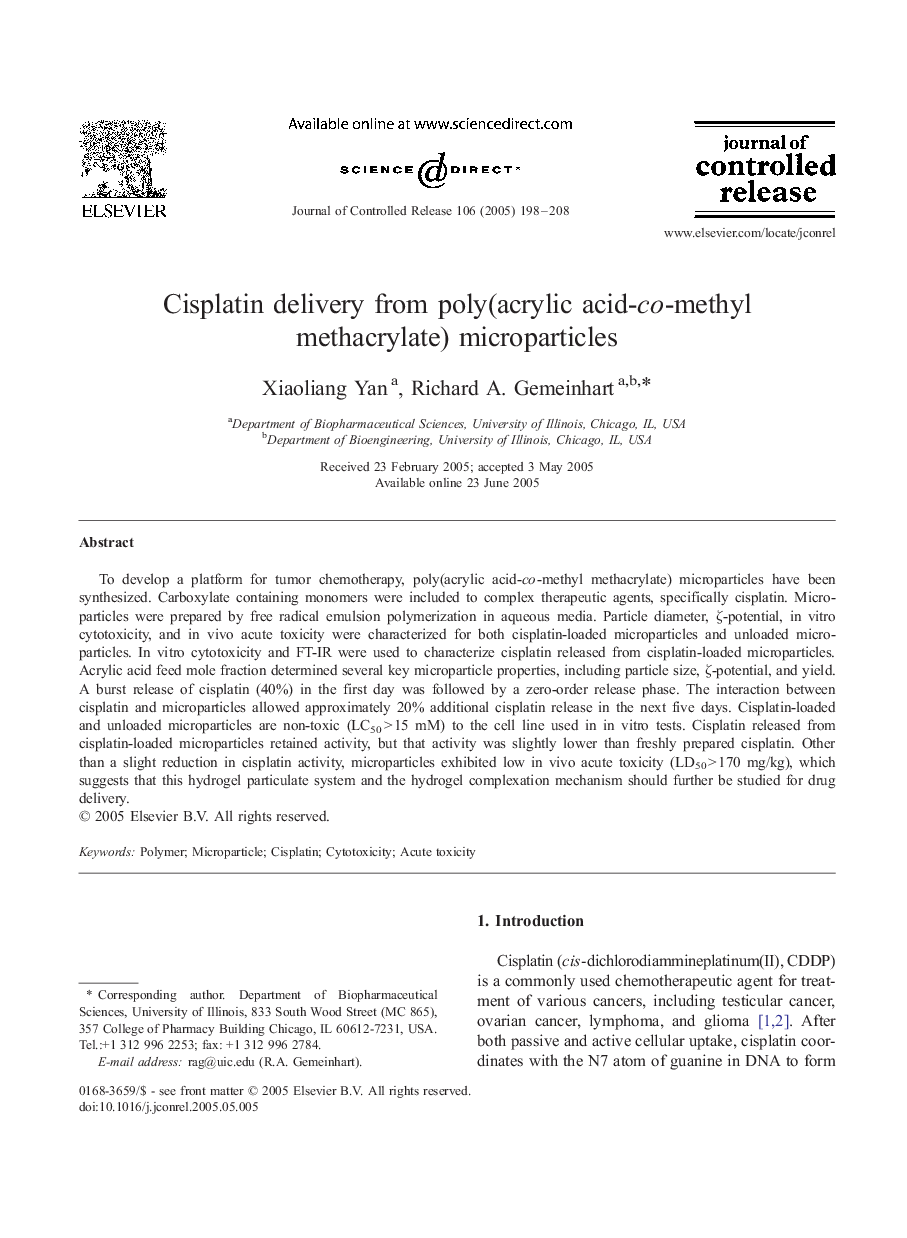| Article ID | Journal | Published Year | Pages | File Type |
|---|---|---|---|---|
| 9774664 | Journal of Controlled Release | 2005 | 11 Pages |
Abstract
To develop a platform for tumor chemotherapy, poly(acrylic acid-co-methyl methacrylate) microparticles have been synthesized. Carboxylate containing monomers were included to complex therapeutic agents, specifically cisplatin. Microparticles were prepared by free radical emulsion polymerization in aqueous media. Particle diameter, ζ-potential, in vitro cytotoxicity, and in vivo acute toxicity were characterized for both cisplatin-loaded microparticles and unloaded microparticles. In vitro cytotoxicity and FT-IR were used to characterize cisplatin released from cisplatin-loaded microparticles. Acrylic acid feed mole fraction determined several key microparticle properties, including particle size, ζ-potential, and yield. A burst release of cisplatin (40%) in the first day was followed by a zero-order release phase. The interaction between cisplatin and microparticles allowed approximately 20% additional cisplatin release in the next five days. Cisplatin-loaded and unloaded microparticles are non-toxic (LC50 > 15 mM) to the cell line used in in vitro tests. Cisplatin released from cisplatin-loaded microparticles retained activity, but that activity was slightly lower than freshly prepared cisplatin. Other than a slight reduction in cisplatin activity, microparticles exhibited low in vivo acute toxicity (LD50 > 170 mg/kg), which suggests that this hydrogel particulate system and the hydrogel complexation mechanism should further be studied for drug delivery.
Related Topics
Physical Sciences and Engineering
Materials Science
Biomaterials
Authors
Xiaoliang Yan, Richard A. Gemeinhart,
